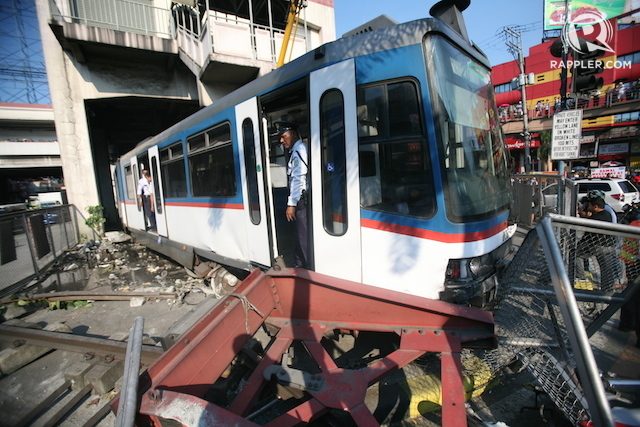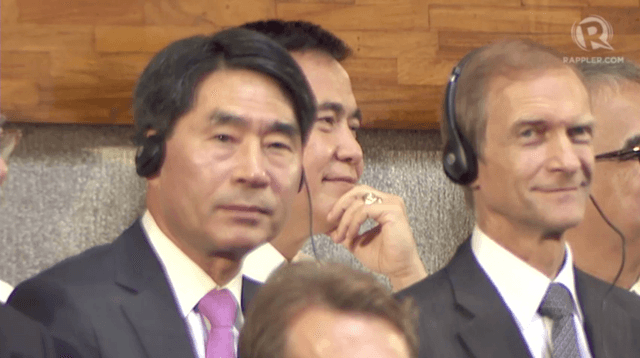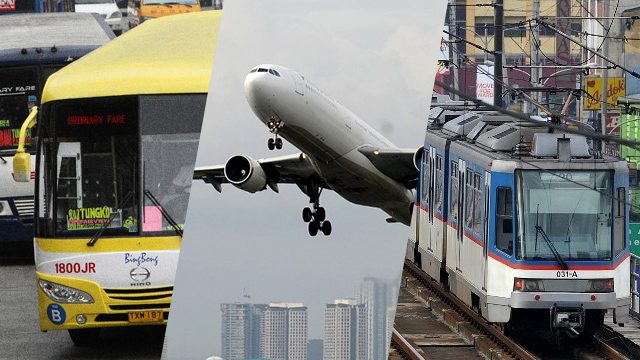SUMMARY
This is AI generated summarization, which may have errors. For context, always refer to the full article.

MANILA, Philippines – Unlike President Benigno Aquino III, transportation experts said the Department of Transportation and Communications (DOTC) is largely to blame for the woes at the Metro Rail Transit Line 3 (MRT3).
“The mess that is MRT-3 is largely the fault of DOTC,” Rene Santiago, president of infrastructure consultancy Bellwether Advisory, Incorporated, told Rappler via email.
Jose Regin Regidor, research fellow at the National Center for Transportation Studies at University of the Philippines-Diliman (UP-Diliman), agreed: “Both (private owner and the government) are at fault but DOTC has the bigger responsibility.”
Their remarks came on the heels of Aquino’s last State of the Nation Address (SONA), where the Philippine president blamed yet again private partner MRT Corporation (MRTC) and his predecessors for the current state of MRT3.
Metro Manila’s busiest mass railway transit line has been operating above its average daily capacity of 350,000, causing long queue lines, disembarkment on the elevated tracks and sudden stops due to technical glitches. (READ: #AnimatED: Problema sa MRT? Rebolusyon ang solusyon!)
A major accident happened in August 2014 that hurt at least 38 passengers.
But in his final SONA on July 27, Aquino absolved his party mate and ally, Transportation Secretary Joseph Emilio Abaya, of any responsibility.
Aquino instead said that the private stakeholder of MRT3 assets, which is MRTC, “allowed the situation to deteriorate, to the point where, at very short notice, they just passed the job of improving the MRT onto us..”
He stressed that his administration merely inherited the problems of the train line – a statement he’s been saying since he delivered his first SONA in 2010. (READ: Aquino on MRT mess: ‘Bad politics’ to blame)

Stillborn projects, too
“Rail transport deserves a failing mark considering the many stillborn projects including the lines 1 and 2 extension and the continued deterioration of the PNR,” Regidor said.
“There are also the cases of MRT7 and the Cebu bus rapid transit that are yet to be implemented despite so much project development for these,” he added.
Regidor said that if the President were talking about the period between 2010 and 2012, then it would be acceptable for him to blame the past Arroyo administration and MRTC.
“However, it is already 2015 and way past the date for passing the blame to the previous administration. There was more than enough time to come up with a solution that includes hammering out a deal with MRTC,” Regidor said.
“Even given the complexities of the contract between the government and MRTC, they could have exerted more effort especially on the part of the DOTC, which was supposed to have the public’s interest as a top priority,” he said.
For Bellwether’s Santiago, the private owner of MRT3 assets has already fulfilled its obligations in providing 22 operational trains during its peak.
“The obligation of the private provider is to make available 22 operational trains during peak. This, it has done and fulfilled, from 2002 to 2011. The decline in train availability started when DOTC intervened and took away maintenance responsibilities from MRTC,” Santiago said.
On July 28, DOTC asked the Robert John Sobrepeña-controlled MRT Holdings, Incorporated II (MRTH II) to drop its bid to stop the addition of 48 new train cars to the MRT3 system. (READ: DOTC to MRTH II: Drop case vs MRT3 train cars delivery)
“The needed rehabilitation was already known and recommended as early as 2009. DOTC sat on these proposals from 2010 to 2013 – preferring an erroneous strategy of equity buyout. The latter means appropriating more than P50 billion (over $1 billion) which would not add an iota (small difference) of improvement to the system,” Santiago told Rappler.
Stalled buyout
It was in February 2013 when Aquino issued Executive Order 126, authorizing the implementation of the MRT3 buyout “to avert the arbitration case filed in 2009 by the MRT3 owner against the government due to, among others, failure to timely pay equity rental payment.”
But the buyout is being stalled after the bicameral committee last year rejected the P53.9-billion ($1.18-billion) MRT3 budget, retaining only P18.3 billion ($401.89 million). (READ: SONA 2015: Aquino blames private firm for MRT3 woes)
“The rehabilitation and doubling of MRT3 capacity could have been done for $300 million and completed before 2014,” Santiago said.
For Regidor, “if only the government started implementing improvements like ordering rolling stock in 2012 or 2013, then these could have been delivered in 2014 or this year.”
“People could have benefited from the improvements. Instead, we have very long queues at stations and continuous breakdowns of trains,” he added.

Success in roads
Although the Aquino administration failed to solve the current sorry state of MRT3, transportation experts praised its success in building more national roads.
“In road infrastructure nationwide, I would rate the administration as successful,” Santiago said. “DPWH (Department of Public Works and Highways) has done a good job, wherein it did up to 4 times volume of work without increasing the size of the bureaucracy.”
Regidor agreed. “As far as roads go, I believe the DPWH was able to deliver on their part and not just for national roads under their jurisdiction.”
“These projects under the DPWH were able to address mainly issues on accessibility and partly congestion for roads that were too narrow (not enough capacity) given the growing volume of traffic in the past years,” he added.
On other infrastructure, such as ports, airports, and railways, the government has “utterly failed,” according to Santiago.
“In road infrastructure nationwide, I would rate the administration as successful,” Santiago said, adding that “DPWH has done a good job, wherein it did up to four times volume of work without increasing the size of the bureaucracy.”
But Santiago noted that “apart from cosmetic projects, there has been no major push to mitigate traffic congestion in Metro Manila.”
How about bus terminals?
Santiago cited as an example the 3 provincial bus terminals, known today as integrated transport system, that were announced during Aquino’s first SONA in 2010. None will be completed by mid-2016.
“Another is that the undisciplined buses are still on EDSA and that travel time has worsened because train capacities at Light Rail Transit Line 1 (LRT1), LRT2, MRT3, and the Philippine National Railways (PNR) have decreased,” Santiago said.
For Regidor, transport is not just about roads and bridges. It is also about airports, ports, railways and public transport services, which is under the supervision of DOTC.
While there are “good” grades for aviation (high marks for the lifting of restrictions to local airlines, low marks for airports), perhaps maritime transport deserves only a “satisfactory” grade at best, Regidor said.
Aquino acknowledged that a lot needs to be done in his 11 remaining months.
In his final SONA, Aquino said his administration is working on long-term solutions, such as upgrading the MRT3’s signalling system and automated fare collection system, and repairing broken rails.
The DOTC also expects the delivery of 48 new train cars by January 2016. (READ: New MRT3 prototype train car to arrive in August) – Rappler.com
Add a comment
How does this make you feel?
There are no comments yet. Add your comment to start the conversation.